Submitted by WA Contents
Santiago Calatrava’s sculptural Oculus WTC in New York photographed by Hufton + Crow
United States Architecture News - Sep 01, 2016 - 10:51 29739 views
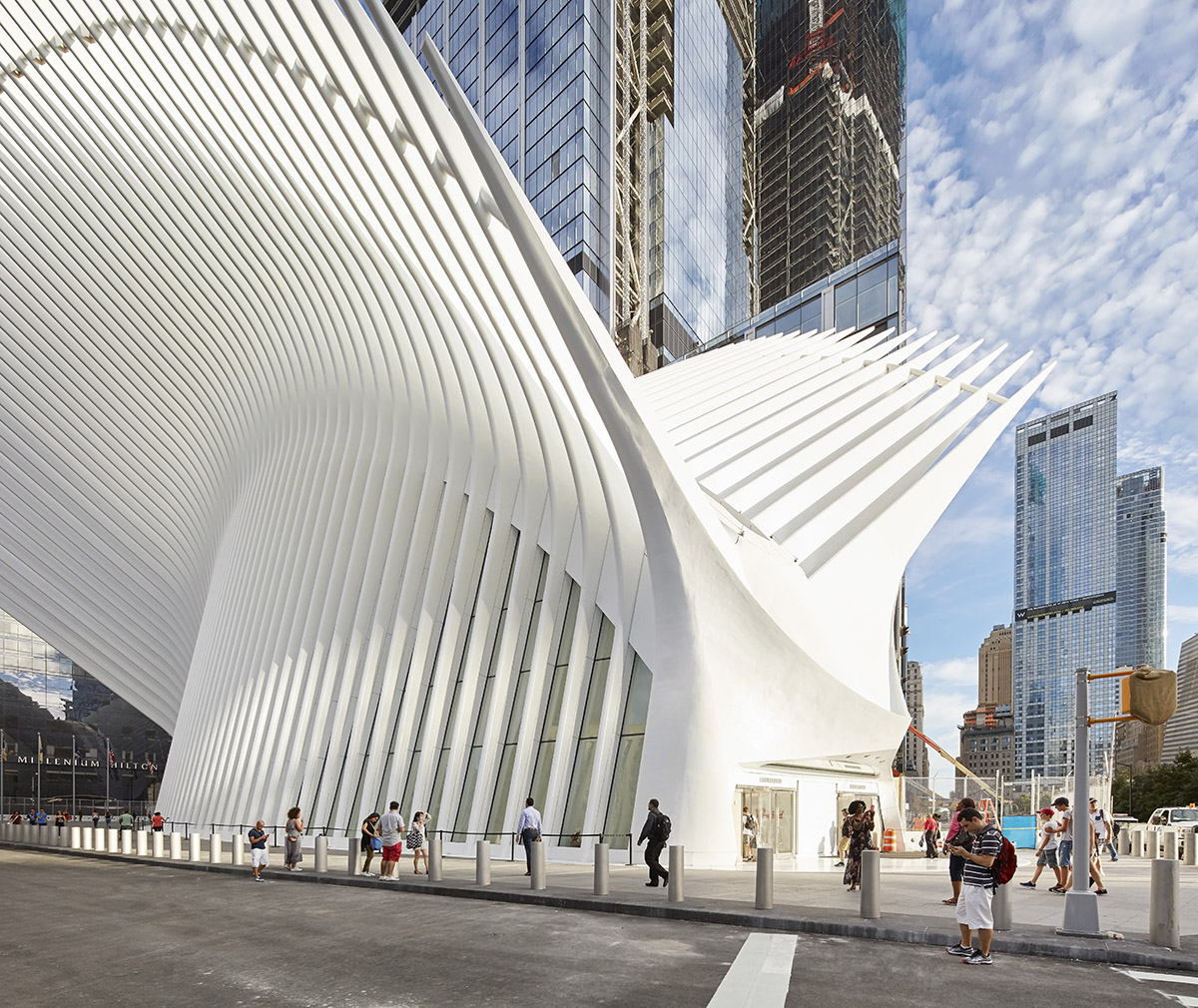
Acclaimed architect and engineer Santiago Calatrava's sculptural 'Oculus'-World Trade Center Transportation Hub has been opened to the use in New York. Perceived as a free standing structure, the 'Oculus' is comprised of steel ribs and glass arrayed in a large elliptical shape. The ribs extend to create two canopies over the north and south portions of the plaza-the bird-like structure has now been photographed by Hufton + Crow in details.

Image © Hufton + Crow
Hufton + Crow's visuals reveals exterior and interior detailed perspectives showing that how the structure plays with natural light and changes its own skin according to daylight. Located along the southern edge of Daniel Libeskind's 'Wedge of Light' plaza, this treatment of the site creates a kind of pause amid the dense commercial towers and links the procession of green spaces extending from City Hall Park to the churchyard of St. Paul's, through the WTC Transportation Hub plaza to the gardens of the Memorial and Battery Park along the Hudson.
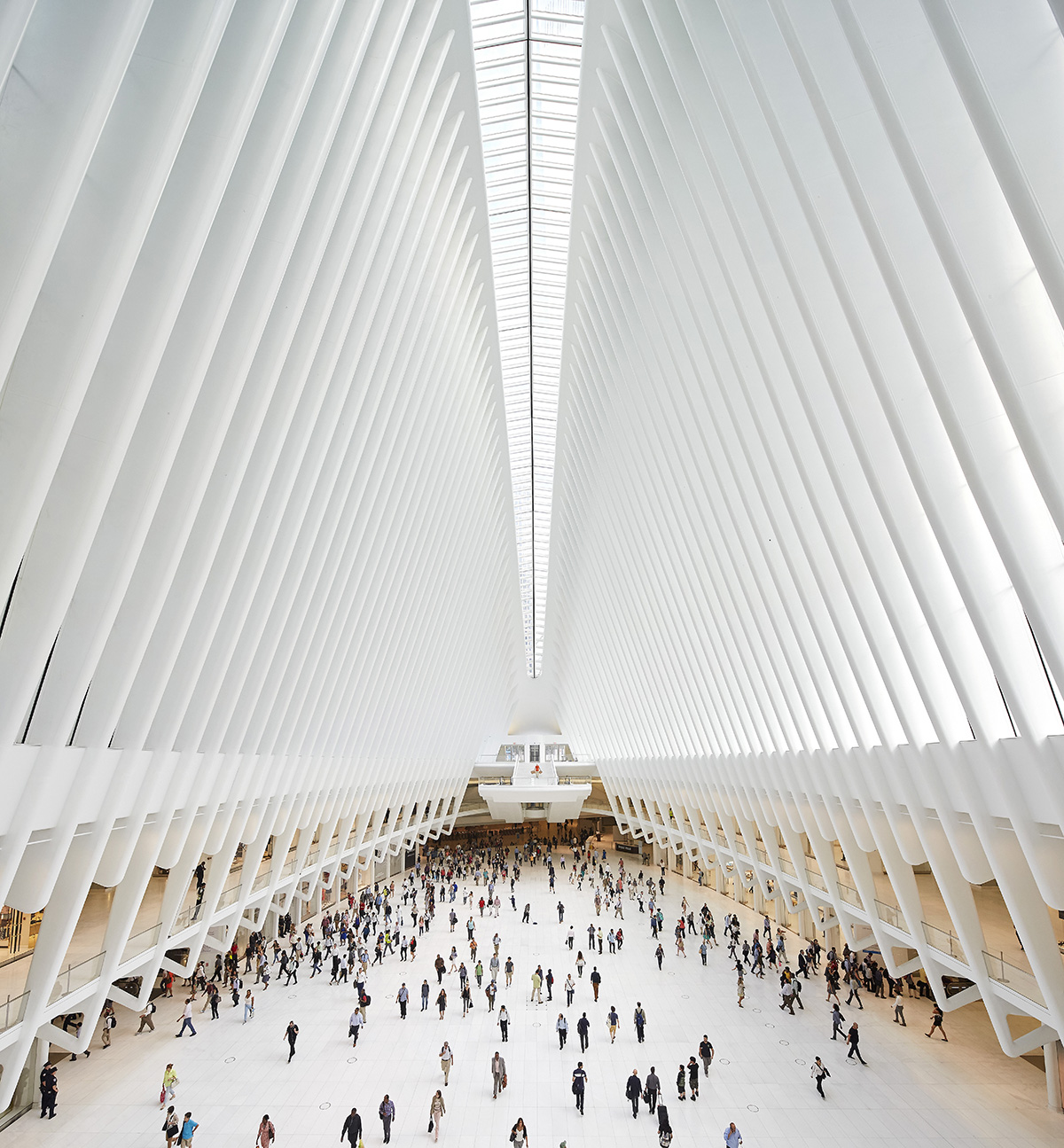
Image © Hufton + Crow
The rafters spring from two 350 ft arches flanking the project's central axis. Between the arches, a 330 ft operable skylight frames a slice of the New York sky, and opens on temperate days as well as annually on September 11.
Although suggestive of motifs from many traditions (the Byzantine mandorla, the wings of cherubim above the Ark of the Covenant, or the sheltering wings on Egyptian canopic urns), the form may be summed up, according to Santiago Calatrava, by the image of a bird released from a child's hands.
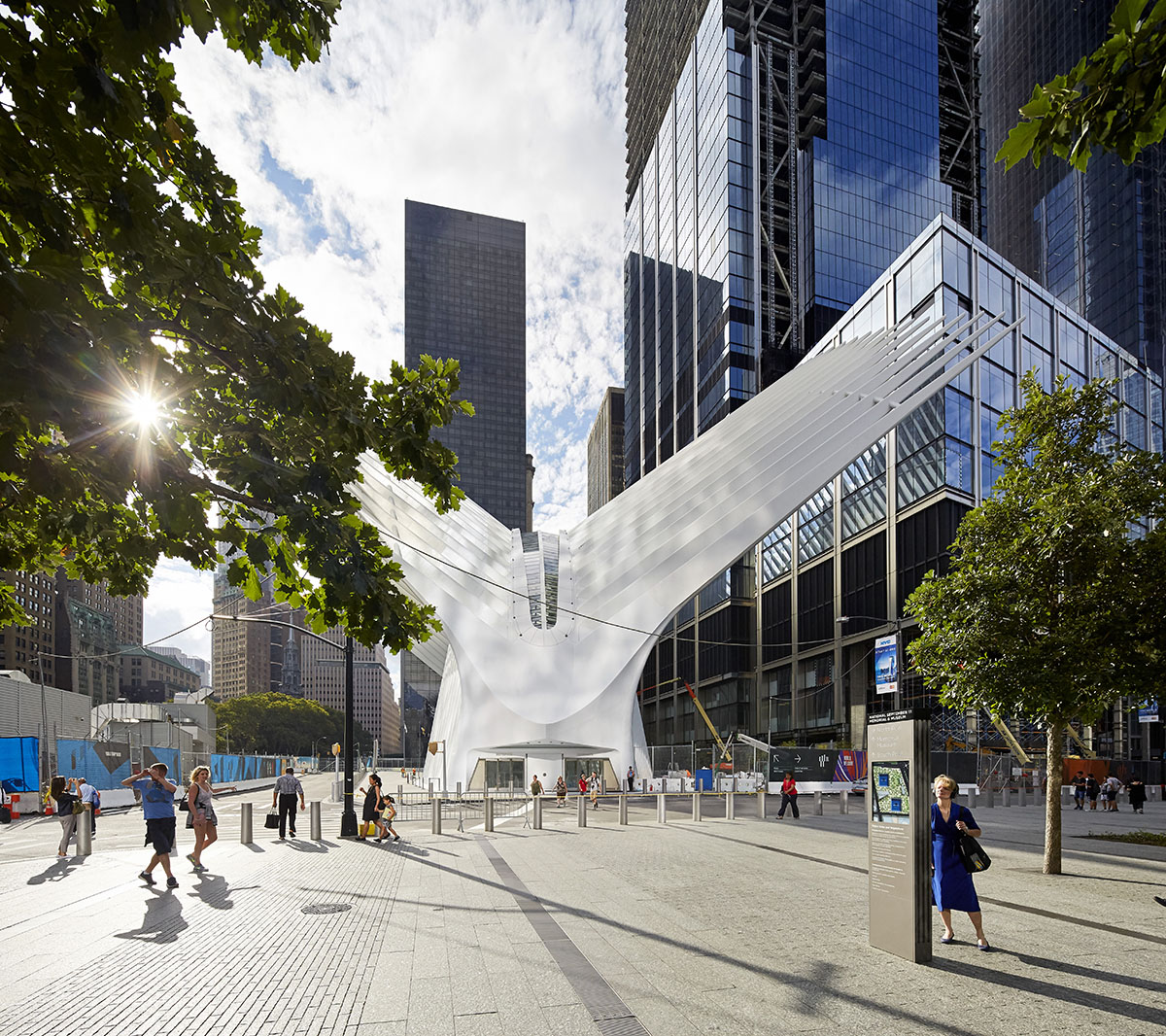
Image © Hufton + Crow
This Oculus allows natural daylight to flood into the WTC Transportation Hub; filtering down through all levels eventually to the PATH train platform, approximately 60 ft below the street. At night, the illuminated building will serve as a lantern in its neighborhood. Santiago Calatrava speaks of light as a structural element in the WTC Transportation Hub, saying that the building is supported by 'columns of light.'
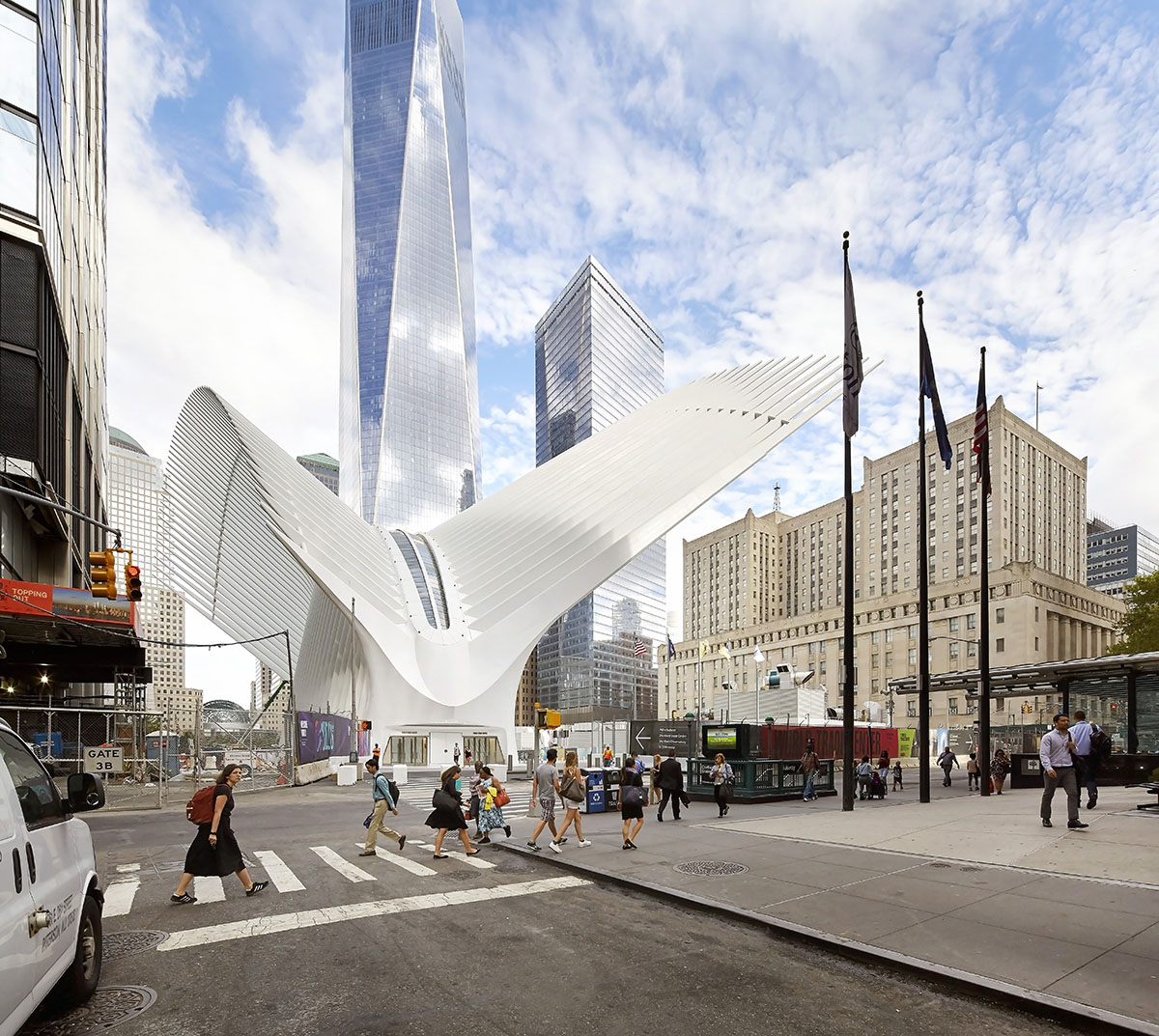
Image © Hufton + Crow
Access into the building is provided from Church and Greenwich Streets through the east and west arch abutments of the Oculus. Entry stair landings cantilever over the large below grade piazza called the Transit Hall. Escalators, elevators and stairs provide access to the upper and lower retail concourse levels.
The lower concourse is approximately 34 ft below street level, and 160 ft below the apex of the operable skylight. The column-free elliptical space is approximately 350 ft long, by 115 ft across at its widest point.
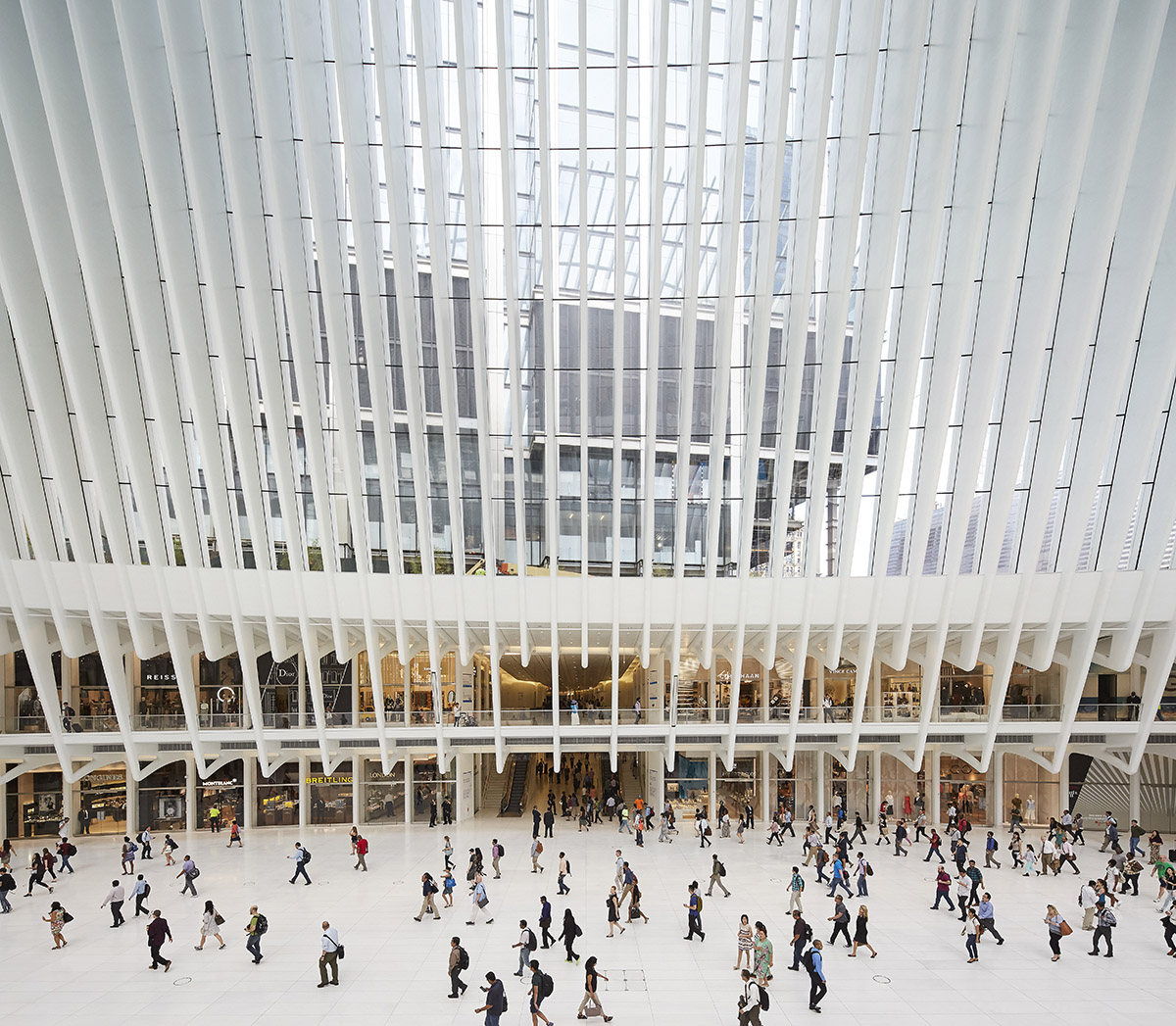
Image © Hufton + Crow
The site is bisected by the #1 line under Greenwich Street. West of the subway, and eight feet below the lower concourse is the PATH Hall, which provides ticketing, fare control and other services for access to PATH trains.
Similar to the Transit Hall and Oculus, the PATH Hall is defined by a series of parallel steel ribs that, in this case, provide an undulating ceiling plane 55 ft above the floor.
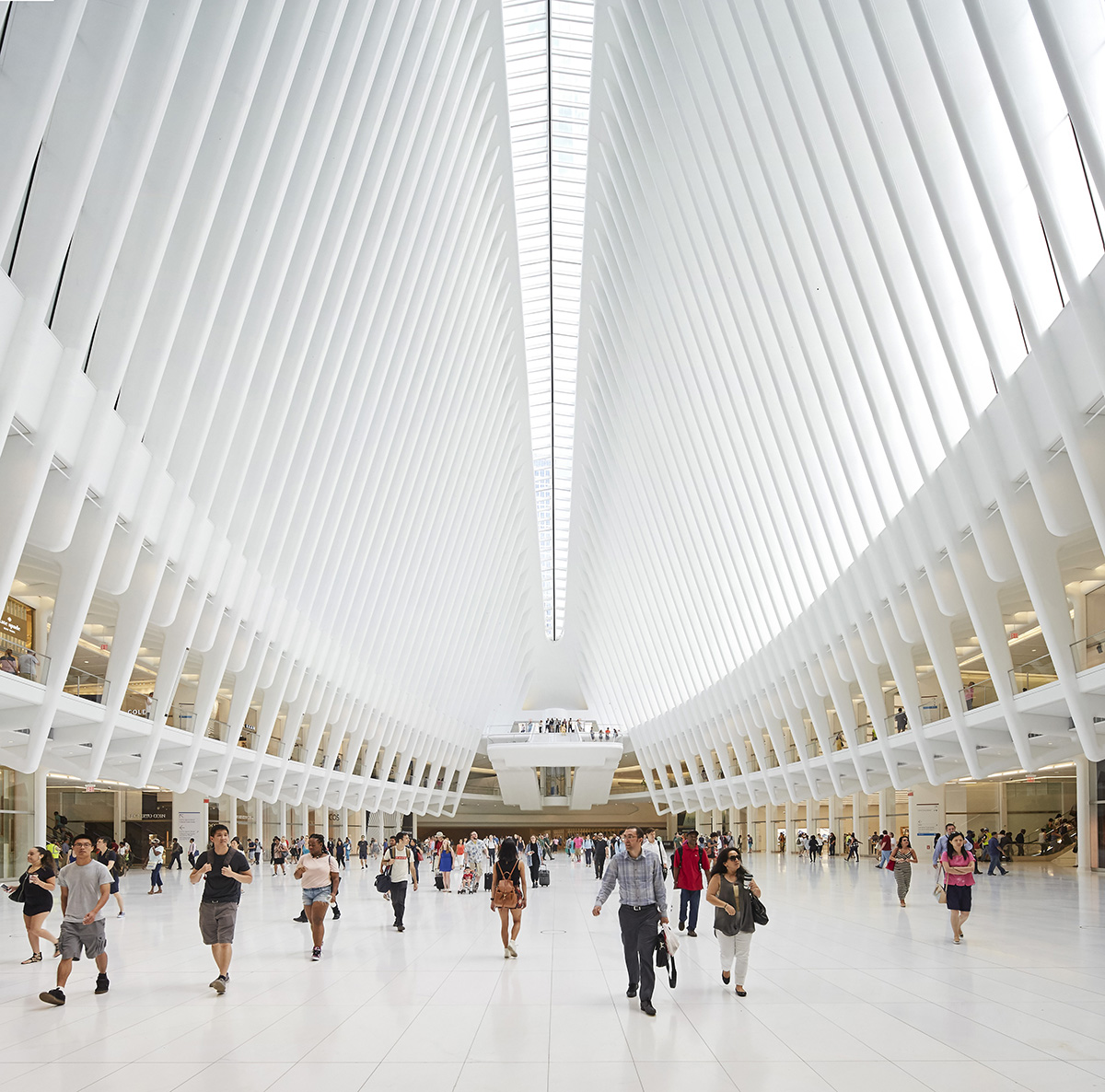
Image © Hufton + Crow
The clear spans of the space facilitate comfort, orientation and enhanced security. The path hall and transit Hall are linked below the #1 subway line which provides visual connectivity from the extreme east and west points of the WTC Transportation Hub.
Below the path hall are four path train platforms providing service to Hoboken and Newark, New Jersey. Openings in the path Hall floor provide a spatial connection between the platforms and the ceiling of the path hall so that arriving commuters enter into a great space directly upon detraining.
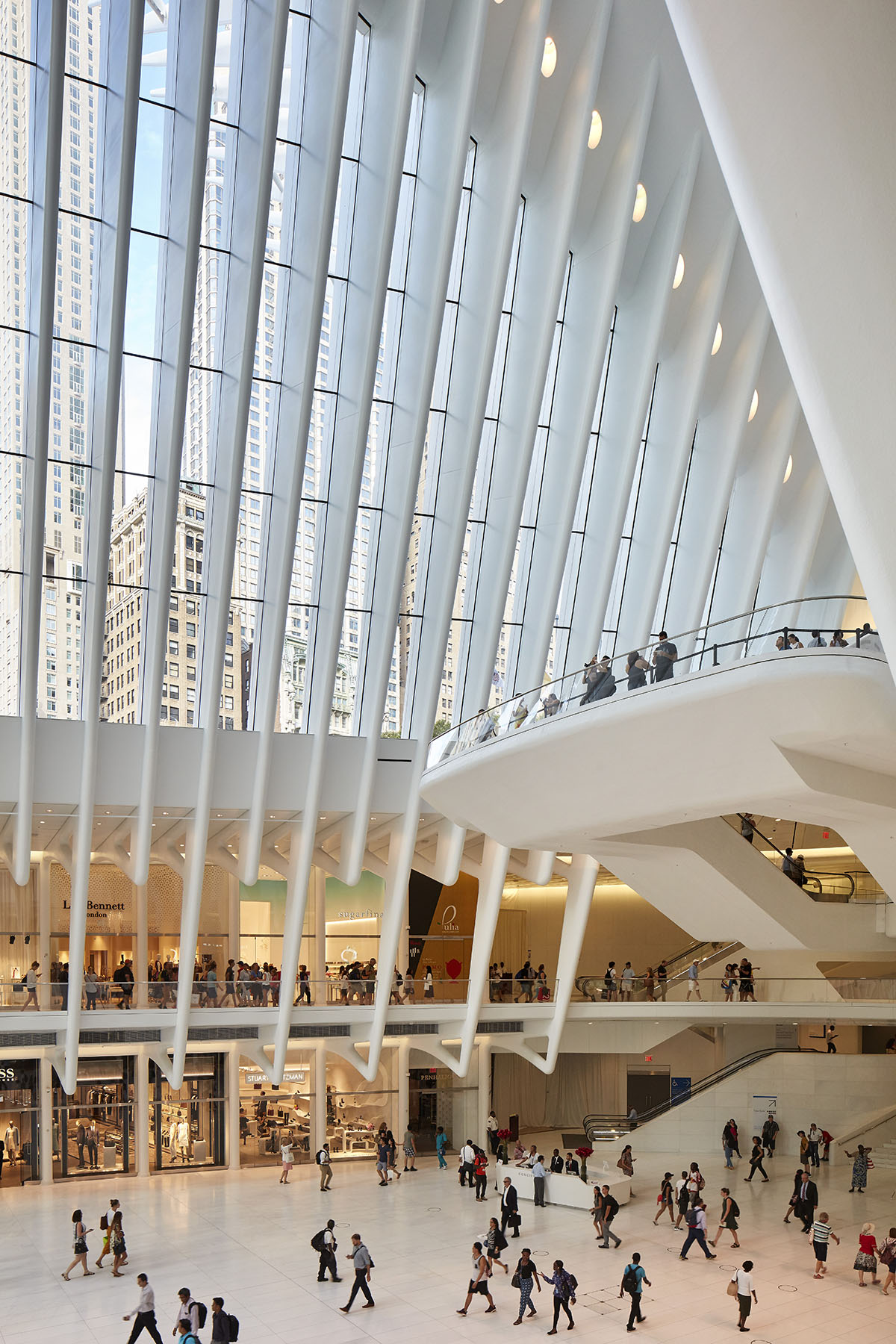
Image © Hufton + Crow
The combination of natural light and sculptural form give dignity and beauty to the building’s lower levels and pedestrian walkways, and provide New York City with a kind of public space it has not previously enjoyed.

Image © Hufton + Crow

Image © Hufton + Crow
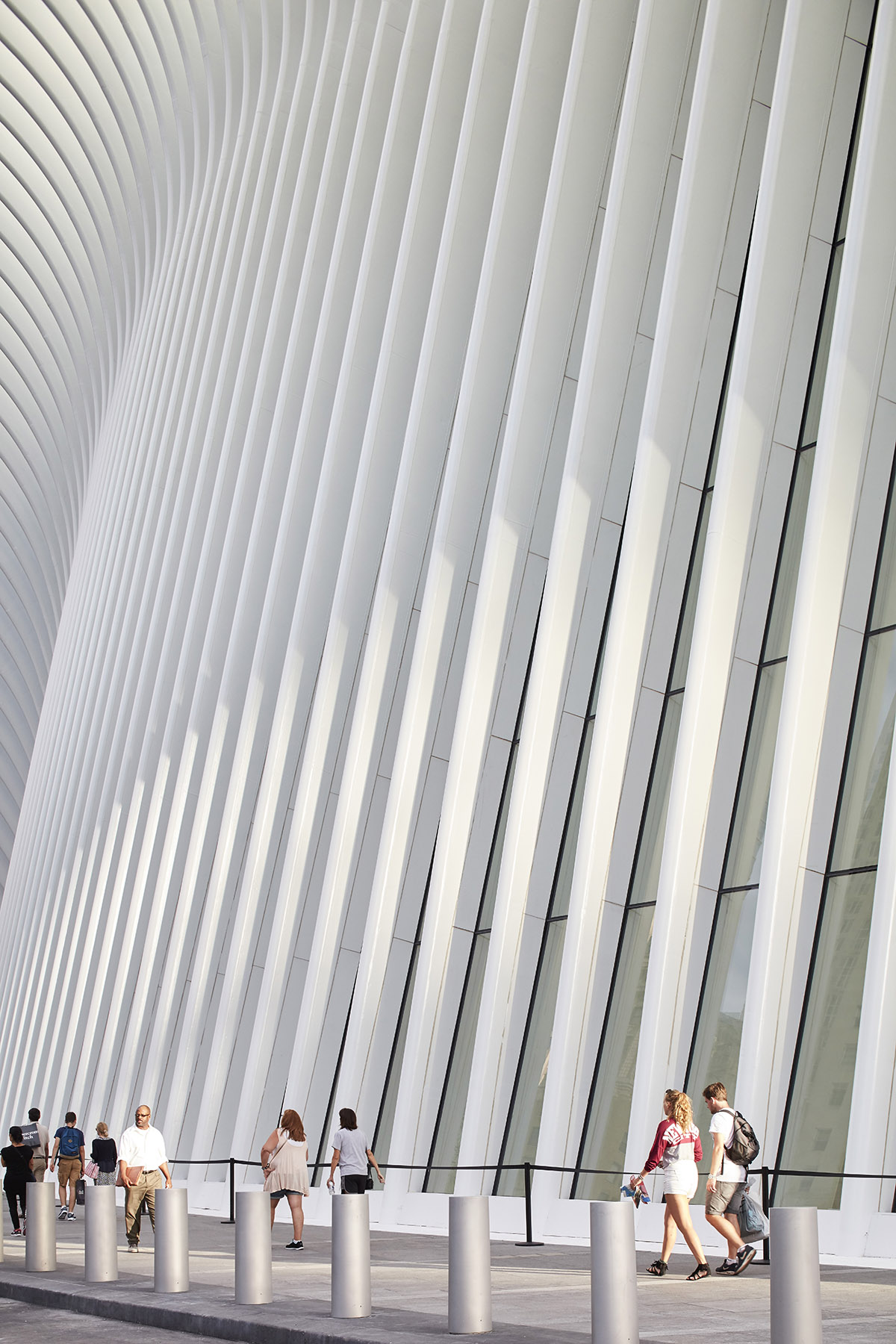
Image © Hufton + Crow

Image © Hufton + Crow
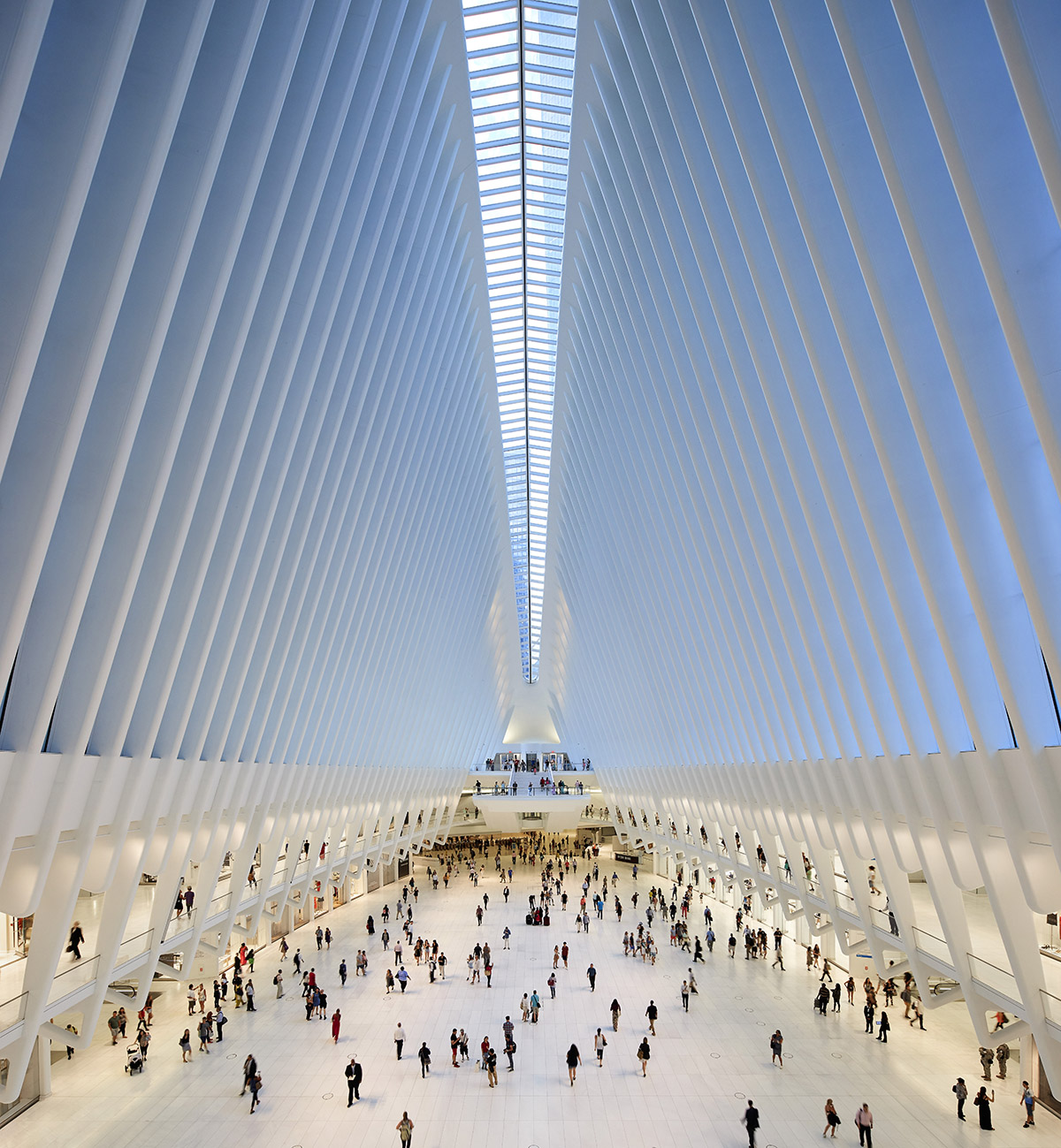
Image © Hufton + Crow
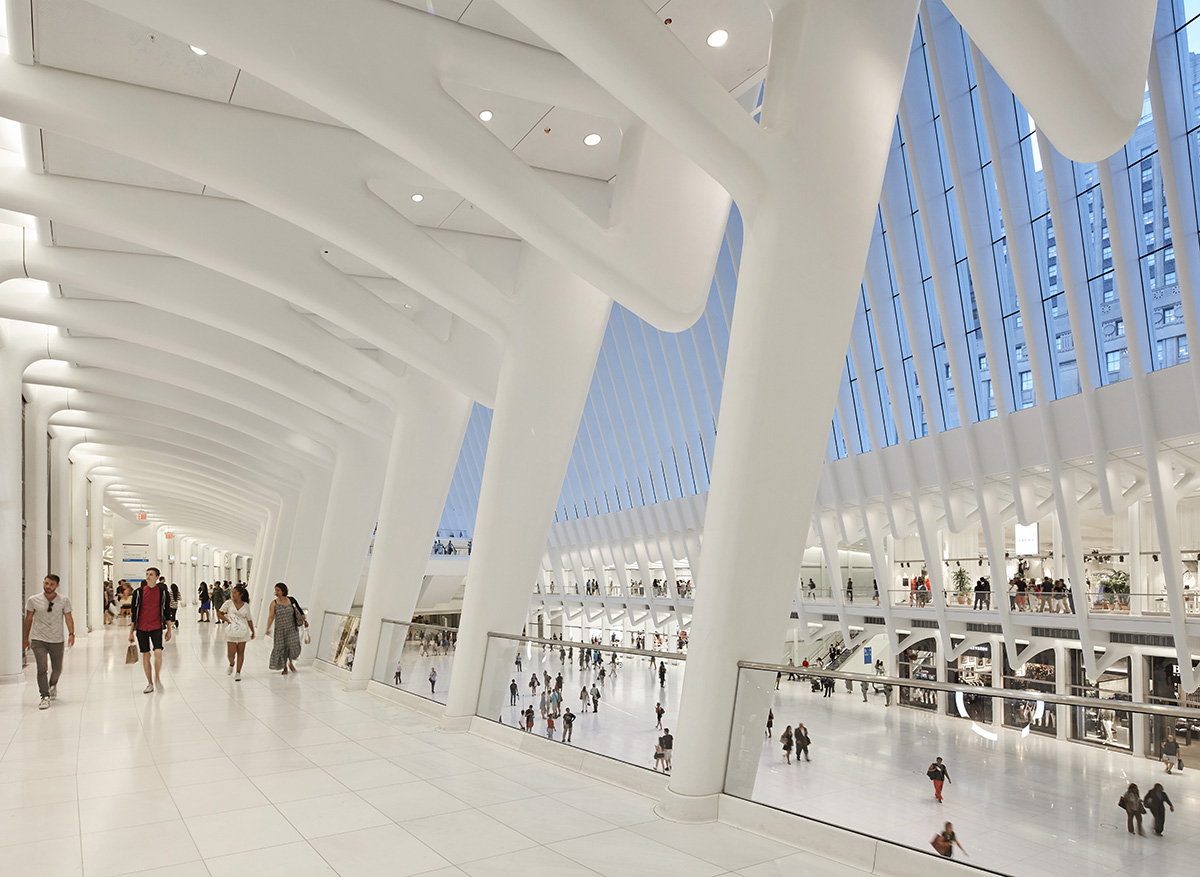
Image © Hufton + Crow
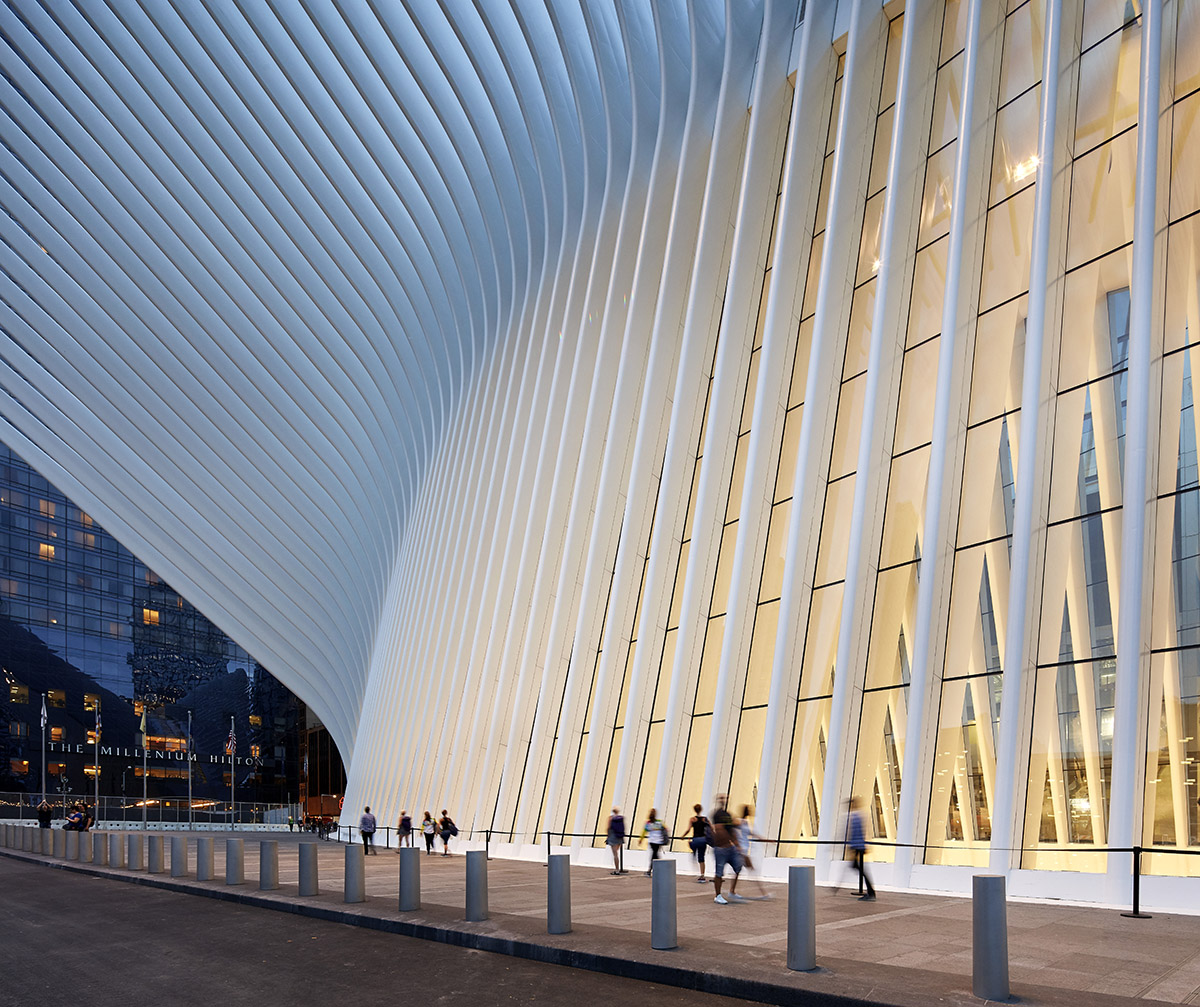
Image © Hufton + Crow
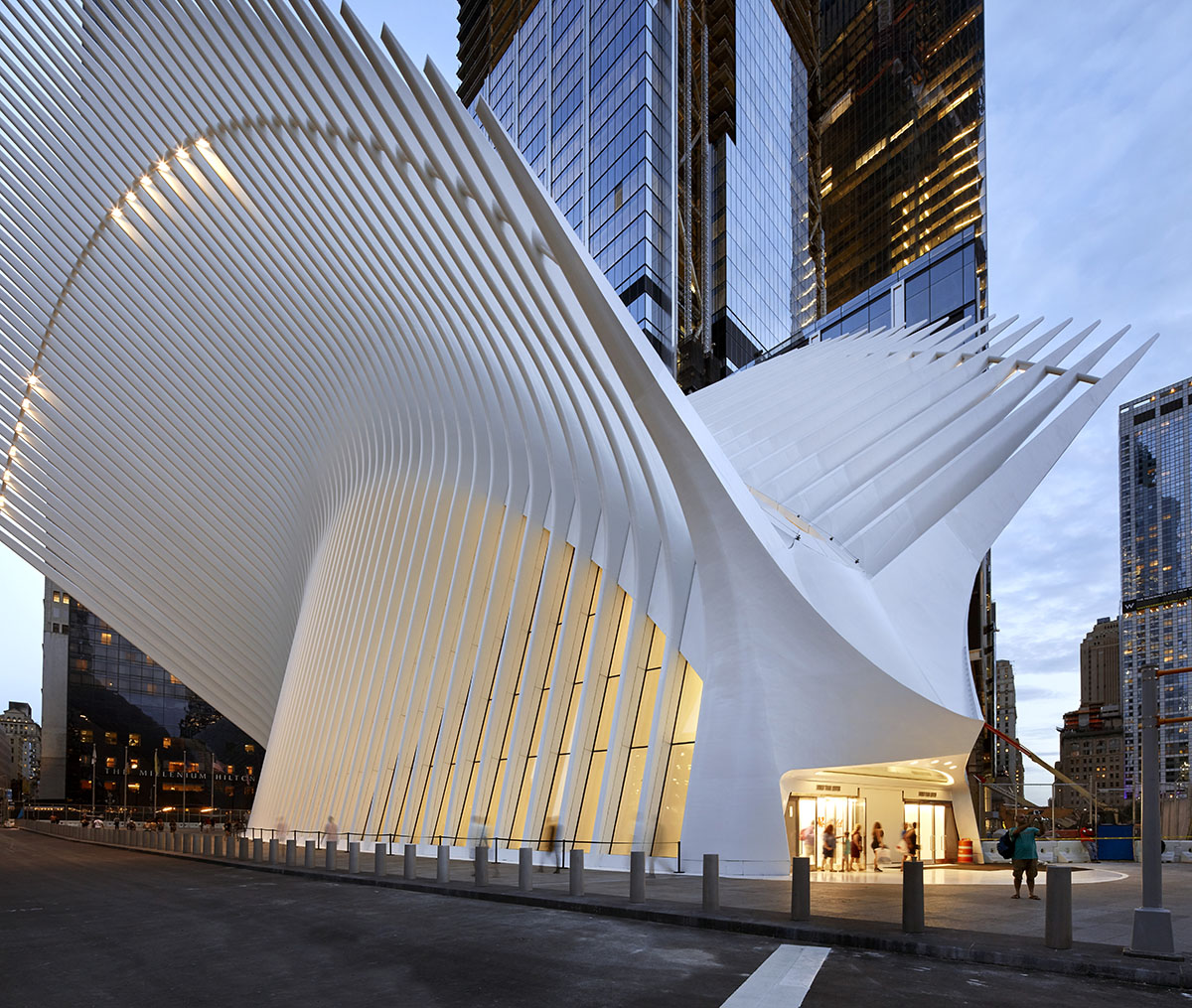
Image © Hufton + Crow
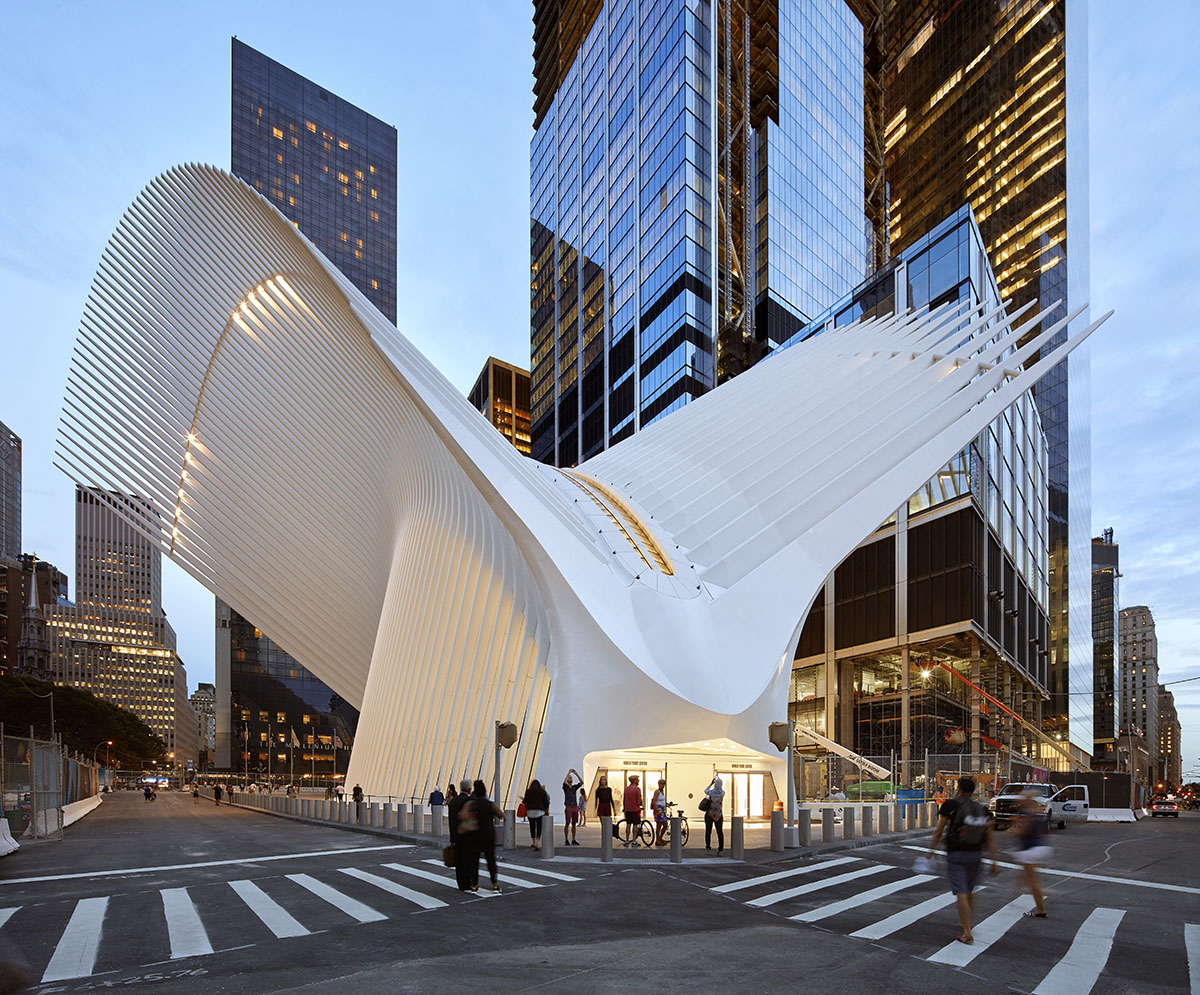
Image © Hufton + Crow
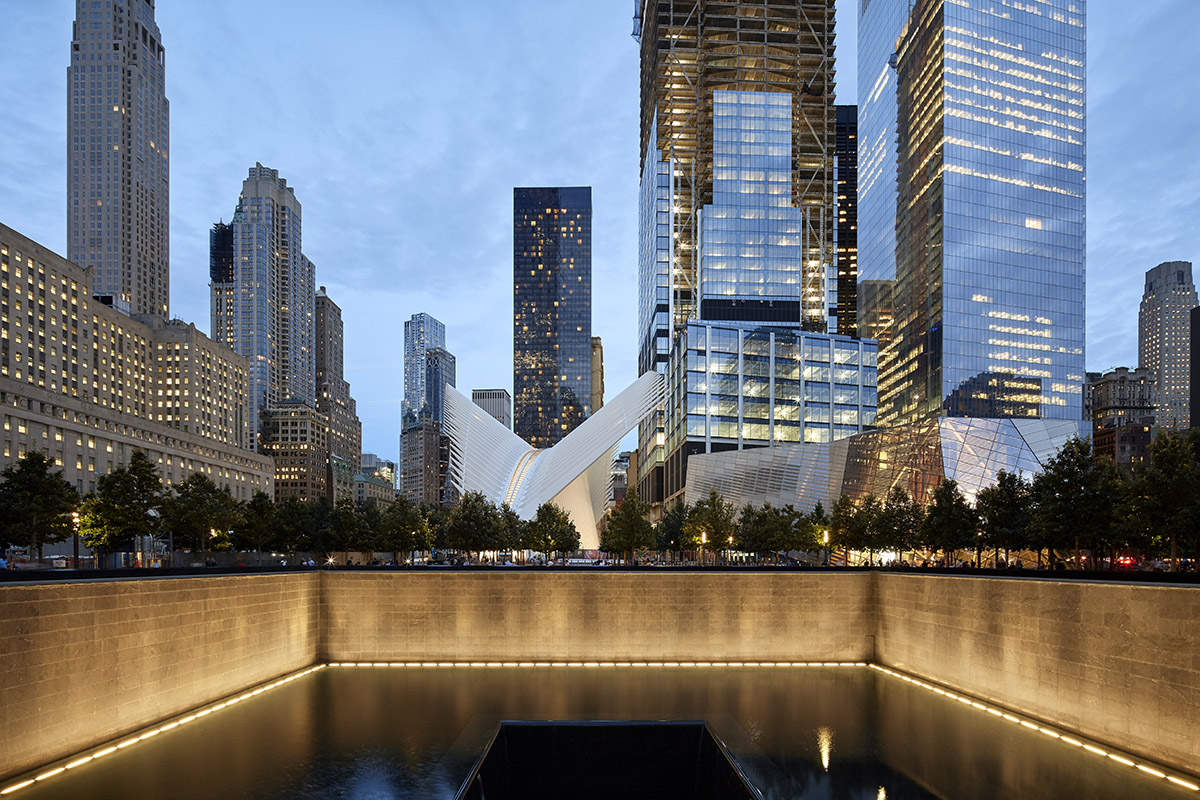
Image © Hufton + Crow
Top image © Hufton + Crow
